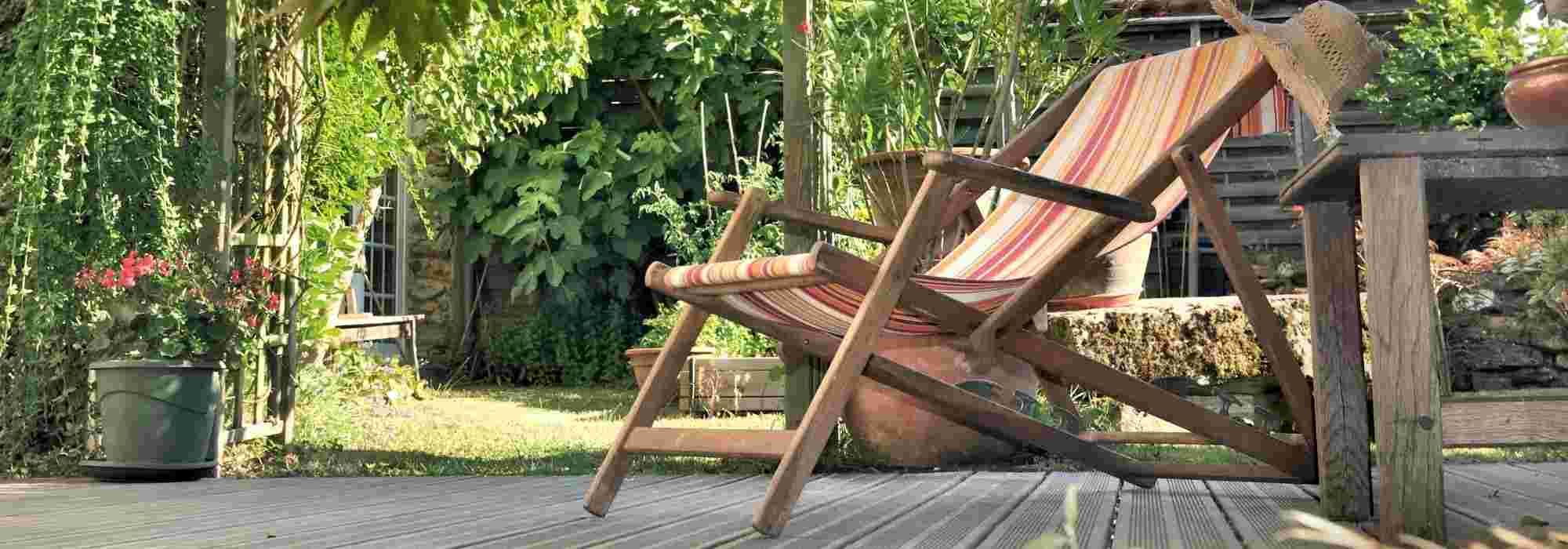
8 mistakes to avoid on your terraces
Plants well-suited for optimal landscaping
Contents
Cultivating plants on a terrace adds a natural green touch and creates a pleasant protective cocoon. The terrace is a living space in its own right, where you eat, relax, and entertain guests… So, it’s wise to opt for a well-thought-out layout that reflects your tastes!
Before you get started, there are a few simple elements to understand in order to properly organise a terrace with plants.
While it’s clear that you need to choose plants suited to your climate conditions, other points should not be overlooked. We have therefore listed the 8 most common mistakes made and will provide you with our tips for a terrace that is as beautiful as it is functional.
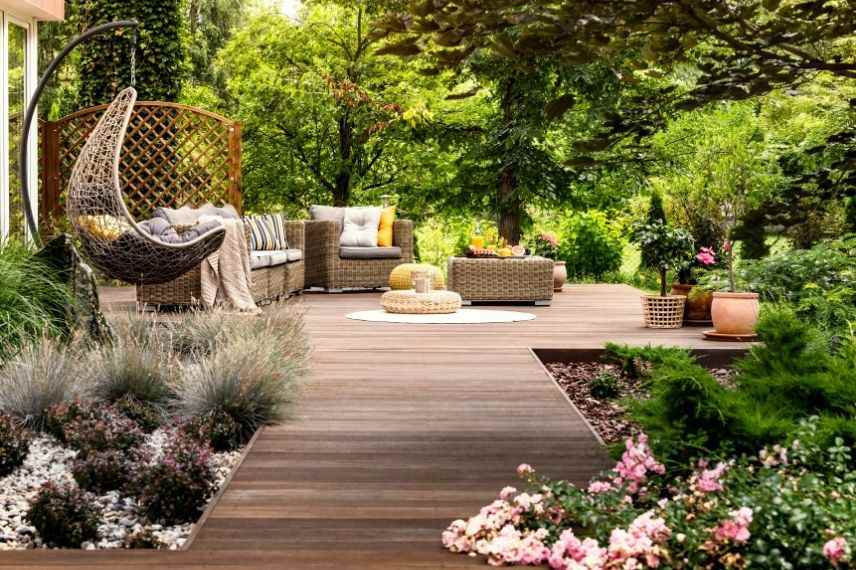
A well-thought-out layout for an attractive terrace
Choosing unsuitable plants
Certainly the most important element for successfully planting your terrace: the choice of plants to grow.
To ensure that they are suitable for your terrace, here are the key questions to consider beforehand:
- What is the orientation/exposure of my terrace?
- What is the size of my terrace?
- What weight can my terrace support?
- What style do I want to give my terrace?
These answers will help you choose plants that are suited to your growing conditions (dense shade, strong sunlight, windy exposure, cold exposure, etc.), to your structural constraints, and to your personal tastes. Do you prefer a graphic or natural atmosphere, a wild jungle, a romantic terrace, or a small zen garden?
Next, among the wide range of available plants, unless you have a full soil area on your terrace, be sure to choose species suitable for container growing. Avoid overly large or exuberant species that exceed 2 m in height and several metres in spread, especially on small terraces or city terraces.
But we also advise you to avoid:
- brittle plants, known to be fragile;
- spiky or thorny plants in small spaces or near pathways;
- plants with overly large roots, known to be destructive;
- certain fruit trees, which tend to stain surfaces and furniture when they drop their fruit.
Here are some examples of plants well-suited to a terrace, depending on the desired style.
- For a Mediterranean terrace: lavenders, thymes, oleaster, griselinias, callistemon, agaves, sedums, …
- For a contemporary terrace: ornamental grasses, boxwoods, alliums, ferns, dwarf pines, ophiopogons, …
- For a Japanese-style terrace: bamboos, camellias, Japanese azaleas, prunus, Japanese maples, pieris, cornus, …
- For an exotic atmosphere: palms, banana trees, hostas, abutilons, strelitzias, colocasias, …
- For a romantic terrace: roses, echinaceas, buddleias, agapanthuses, hardy geraniums, …
For further reading, feel free to check out our articles “Which trees should not be planted near a terrace?” and “Which trees to plant near a terrace?”
Do not play with shapes, textures, and volumes.
To create a harmonious and inviting setting on your terrace, don’t hesitate to play with the different characteristics of plants: double or single flowers, pompom or feathery blooms, tough or light foliage, vertical or creeping habits, etc.
This diversity allows for the creation of volume. Playing with verticality also helps to enlarge the space by utilising different height levels, thus avoiding any sense of clutter.
Choose plants in pots of various sizes or shapes, as well as hanging plants and climbing varieties… Regarding structures, you can also play with the heights of trellises or other supports.
If you wish to create arrangements with different species or grow various plants in the same container, select plants with similar cultural needs (substrate, exposure, fertilisation, etc.). Group heather soil shrubs that prefer acidity, rock garden plants that require poor and light substrate, etc. Conversely, do not combine plants that need regular watering with those that are rarely thirsty.
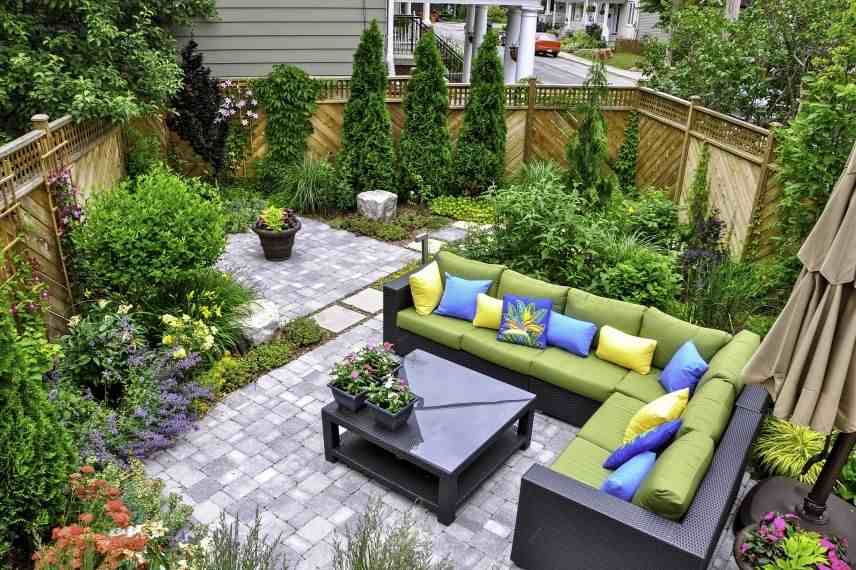 For this terrace, the plants have different shapes, sizes, and textures
For this terrace, the plants have different shapes, sizes, and textures
Discover other Patios
View all →Available in 1 sizes
Available in 1 sizes
Available in 1 sizes
Available in 0 sizes
Available in 0 sizes
Available in 0 sizes
Available in 1 sizes
Available in 1 sizes
Available in 0 sizes
Available in 0 sizes
Getting lost in the choice of colours
If you want to create a harmonious atmosphere on your terrace, we recommend choosing one or two dominant colours at most: soft pink for a romantic touch, red for a dynamic vibe, orange and yellow for a more exotic style, purple for a modern note, and so on.
Do not underestimate white flowerings, which highlight other colours and bring a lot of lightness.
To the colours of your plants, you can match those of your terrace furniture (cushions, pots…) for a cohesive reminder and an even warmer environment.
Omit the staggering of flowering
If the terrace is mainly used during the beautiful season, it would be a shame not to enjoy its view for as long as possible throughout the year. To achieve this, do not cultivate only plants with similar flowering periods; instead, opt for staggered flowering. This way, you can enjoy a flowering and green terrace for many months, even in winter.
Evergreen bushes and conifers will be decorative all year round. Also consider autumn and winter flowering bushes (autumn camellias, witch hazel), bulbous plants (colchicums, Naples cyclamens), climbing plants (winter clematis, winter jasmine), decorative fruit (creeping gaultheria, skimmias), or decorative woods.
D'accord, je ne prendrai pas en compte la vue. Si vous avez besoin d'une traduction ou d'une autre demande, n'hésitez pas à me le faire savoir.
If you’re fortunate enough to have a terrace with a beautiful unobstructed view, you should choose light plants that won’t obscure the landscape. However, if your terrace has to contend with one or more overlooking properties, or an unsightly view, it will be useful to create a proper privacy screen.
Again, you can certainly use plants as natural privacy screens, creating a true green barrier and protective cocoon. If you enjoy your terrace almost all year round, for lasting coverage, choose varieties with evergreen foliage (photinias, fargesia, aucuba). Otherwise, many deciduous species will also work well for this purpose (miscanthus, hornbeam, dogwood).
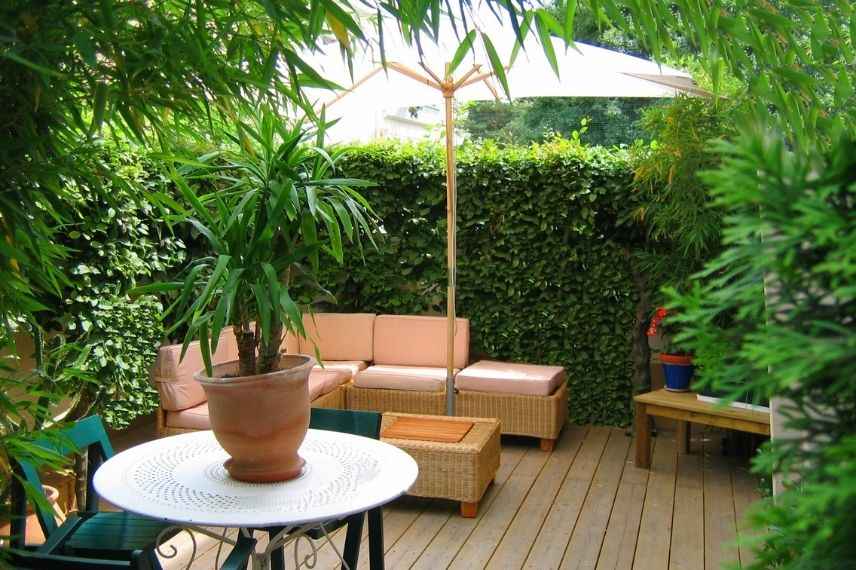
On this terrace, a plant privacy screen has been deliberately set up to shield from prying eyes.
Underestimating the impact of wind
Potted plants will always be more sensitive to gusts than plants grown in open ground. Their root system has less space to develop, making them naturally less stable.
It is therefore essential to choose balanced and heavy containers to prevent your plants from being blown away by the first gust. Lighter pots can be weighted down with stones. Wooden or aluminium troughs or planters are more resilient in windy conditions. Be cautious with beautiful pottery or terracotta pots, which can also break in strong winds in unprotected areas.
In very windy conditions, it is quite possible to tie pots together, to a railing, or securely attach them to a green wall. If your pots are mulched, place them in sheltered areas or opt for clay balls or mulching slabs, instead of leaf or wood chip mulches that are too light and may blow away.
There are many plants that can withstand the onslaught of winds and sea spray, thanks to their natural sturdiness or reduced wind resistance: dwarf trees, climbing plants, bushes… Conversely, avoid fragile plants or those with slender stems unless they are securely staked.
If your terrace is very exposed, consider installing a windbreak, which can be artificial (lattice, trellis, metal panel). Alternatively, you can opt for a natural windbreak by choosing robust and dense hedge shrubs, such as cherry laurel, Japanese spindle, or aucuba.
Additionally, discover our article “Break the wind on a terrace: The plants you need!”.
Neglecting shade
In summer, temperatures can quickly rise on a sun-drenched terrace. If you are exposed to the south or west, you will enjoy many hours of sunlight throughout the day. Providing shade can therefore be essential to protect yourself from the burning rays of the sun and to bring some coolness.
You can install a pergola or a small gazebo, charmingly adorned with a beautiful climbing plant, such as passionflower, honeysuckle, or wisteria. Also, take advantage of the light and natural shade provided by bushes, such as serviceberry or lagerstroemia.
Ideally, choose deciduous plants that will allow sunlight and light to pass through during winter.
Find more tips in the article: “Terrace shading: which plants to choose?”
Forget that potted plants need care.
Potted plants, whether in containers, boxes, or window boxes, are naturally more sensitive and fragile than those grown in open ground. The substrate and nutrients deplete, and water evaporates more quickly. Climatic conditions also have more extreme consequences: drought, cold that affects both roots and aerial parts, etc.
At the time of planting, be sure to choose suitable substrates. Opt for high-quality composts or specific composts for your type of plants (heather soil, for Mediterranean plants, for flowering bushes, etc.). These will generally provide better water retention and greater nutrient richness, according to cultivation needs. There are now versions for terraces and small gardens, which are less bulky and cumbersome than regular compost bags.
Regular watering and fertilisation are recommended to promote the development and health of potted plants. In case of prolonged absence, such as going on holiday or simply to save time in daily care, you can easily install semi or fully automatic watering systems. For example, there are drip systems perfectly suited for potted cultures, or even ollas.
Also consider wintering the less hardy plants, using covers or protective covers and thick mulching.

Take care of your potted plants on the terrace, as they are more sensitive than those in open ground
- Subscribe!
- Contents
































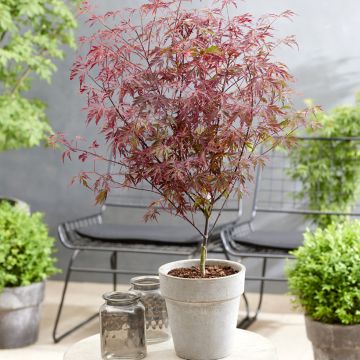
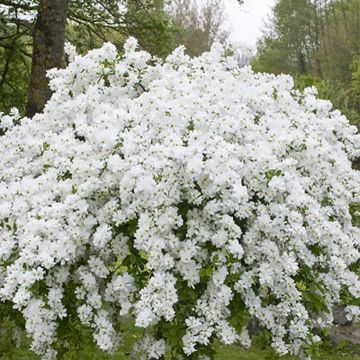


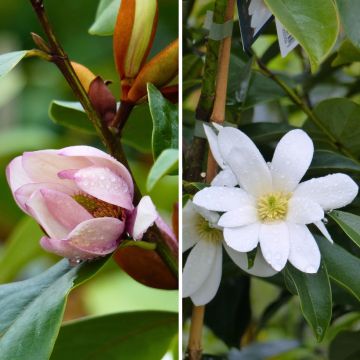


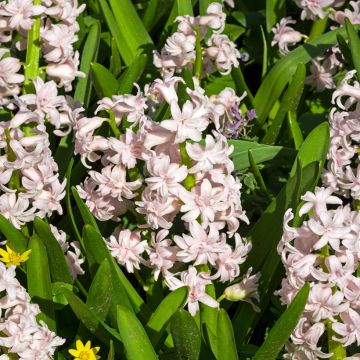
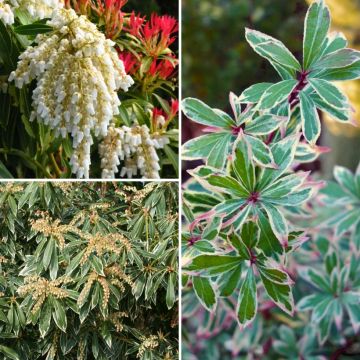

Comments